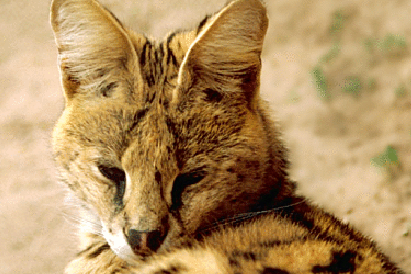By Melissa Clark
DEADLY snakes, wild cats and herds of bison are now calling Scotland their home.
More than 100 of the world’s more exotic creatures are being kept under the Dangerous Wild Animals Act in North-East Scotland, a freedom of information request has revealed.
A western diamond back rattlesnake, which has a deadly venomous bite, lives in one Aberdeen city centre flat.

This snake can grow to around 4ft and is believed to be responsible for the second greatest number of snake-bite deaths in the US.
A spokeswoman for Aberdeen City Council said: “Anyone wishing to keep a dangerous animal will require to have a licence.
“Aberdeen City Council endeavors to ensure that only competent individuals are granted a licence and that current best practice is used in assessing the acceptability of welfare standards and licensed premises.
“The conditions attached to dangerous animal ownership were developed with veterinary advice where necessary.”
There is no legislative requirement to inform neighbours if a dangerous animal is living nearby.
Aberdeenshire is also home to a group of dangerous felines, including
45 Bengal cats, two Serval cats, one Savannah cat and two Ocelots- also known as the “dwarf leopard”.
All of the cats live at the same address in Buchan.
Other unusual pets include three ostriches in Formartine.
Kincardine and Mearns in Aberdeenshire is home to a herd of 20 North American bison and another herd of 60 bison.
The Dangerous Animal Act came into force in 1976 in response to a new trend of keeping exotic animals.
The aim of the act was to minimise the risk to the public through a local authority licensing and inspection regime.
There have been no reported breaches of the Act in Aberdeen and Aberdeenshire in recent years.
However, in other parts of the country, animals that have been kept under the Act have escaped into the wild.
A puma was caught in a trap by a farmer near Inverness in 1980.
This feline was caught after an eight-month hunt after the farmer had lost many sheep and foals.
In 1988, a leopard was shot near Jedburgh in the Borders.
A year later, another was killed in Berwickshire.
The Scottish SPCA explained that anyone thinking of owning an animal or snake falling under the Act should consider its health.
Tom Gatherer, Deputy chief superintendent, said: “We would not recommend or encourage the keeping of such creatures.
“Anyone who does so would require extensive knowledge and expertise to ensure the welfare of that animal and of the wider public.
“Dangerous wild animals are best suited to living in their natural habitat.”

